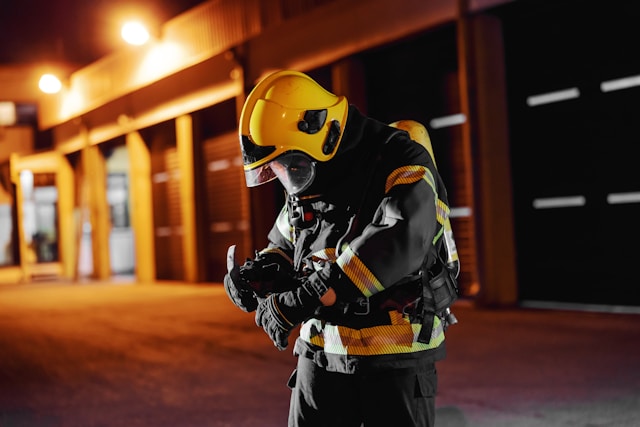Fire safety has come a long way from just smoke alarms and fire extinguishers. These days, smart fire protection is all about using technology to spot, stop, and even prevent fires before they get out of hand.
Think of it like this: instead of just waiting for a fire to start and hoping your alarms go off, smart systems keep an eye on things 24/7. They connect to your phone, talk to each other, and can even send help your way before the situation turns serious.
It’s not just for big office buildings or factories either. Homeowners are adding these systems for extra peace of mind — because whether it’s your family or your business, no one wants to take chances with fire.
How Tech Is Making Detection Way Smarter
Old-school smoke detectors were fine for their time, but they could be a bit… basic. Smart fire protection uses connected sensors that can pick up on smoke, heat, and even dangerous gases.
Here’s the cool part:
- They talk to each other so if one picks up something weird, the rest know instantly.
- You get alerts straight to your phone, so you don’t have to be home to know something’s wrong.
- They’re smart enough to tell the difference between actual danger and, say, burnt toast.
Because they’re connected to the internet, you can also check in on them from anywhere. And if a sensor is acting up, the system can let you know before it fails completely.
Putting Out Fires Without Making a Bigger Mess
Detecting a fire is one thing — stopping it without causing more damage is another. Smart fire protection has moved beyond the standard water sprinklers to give us better, more targeted ways to put out flames.
Some of the standouts include:
- Clean agent systems: These use special chemicals that knock out fires fast but don’t harm electronics or leave a mess behind. Perfect for server rooms or places with valuable stuff.
- Water mist systems: A gentler approach that uses super fine water droplets to cool down flames with less water damage.
- Foam systems: Great for handling fires caused by flammable liquids, like in factories or fuel storage areas.
- Firefighting robots: Yes, robots. They can go into places too dangerous for people, find hot spots with thermal cameras, and spray the right stuff exactly where it’s needed.
This means you can fight the fire without ruining everything else in the process.
Building With Fire Safety in Mind
It’s not just about what you do when a fire starts — it’s also about how you build things in the first place. More and more, smart fire protection includes using materials that slow down or stop fire spread.
Some examples:
- Intumescent coatings: These puff up when heated, creating a heat barrier to protect steel beams and other structures.
- Fire-rated glass: Keeps flames and smoke from spreading between rooms for a set amount of time.
- Treated wood and composites: Designed to resist catching fire or burning quickly.
By choosing these materials from the start, you’re giving yourself extra time in an emergency — and that can make a huge difference.
The Next Level: Predicting Fires Before They Start
This is where things get really interesting. Smart fire protection is starting to use predictive analytics — basically, using data to figure out where and when a fire might happen.
By looking at patterns from past incidents, sensor readings, and even weather data, these systems can flag potential risks before they turn into real problems. That might mean spotting a piece of equipment that’s overheating or a wiring issue before it sparks a flame.
And it’s not just on the ground — drones are being used to scan buildings or large outdoor areas, finding hot spots and helping firefighters know exactly where to go.
The dream? Fully automated fire safety, where the building itself keeps watch, makes decisions, and works with emergency crews without you having to lift a finger.
Why You Should Care About Smart Fire Protection
At the end of the day, smart fire protection is about making life easier, safer, and less stressful. It’s a mix of prevention, early warning, and smart responses that give you the best possible chance of avoiding disaster.
Whether you’re a homeowner who just wants to protect your family or a business owner looking to safeguard your investment, there’s a version of these systems that can work for you.
Fires may be one of the oldest hazards we face, but with today’s technology, we’ve never been better equipped to handle them — and even stop them before they start.

